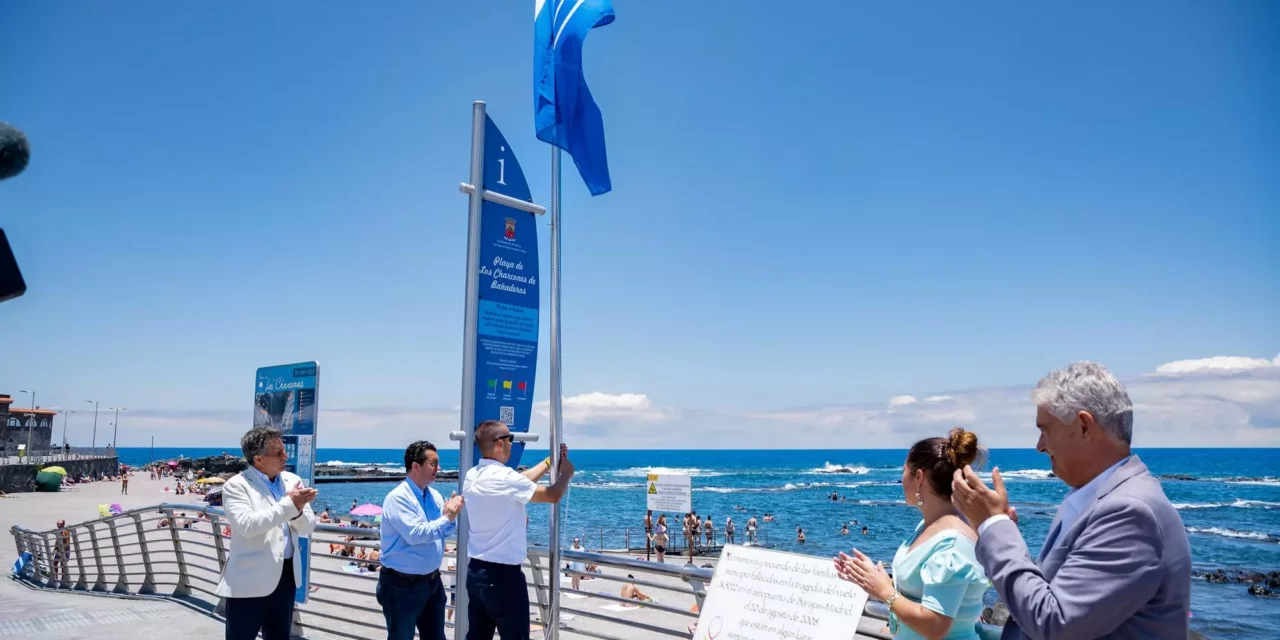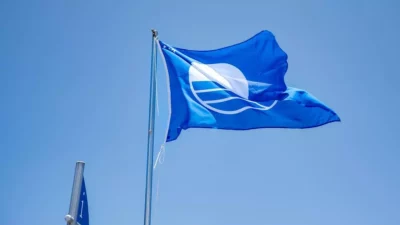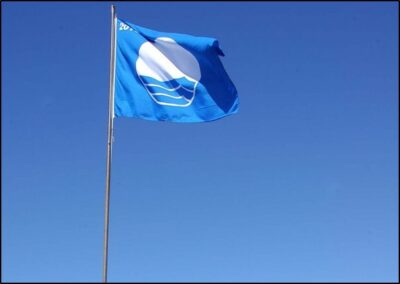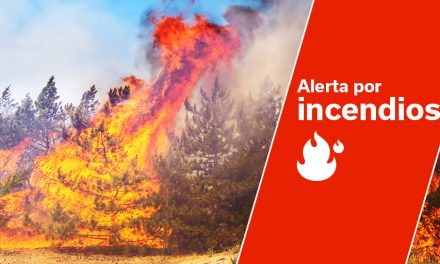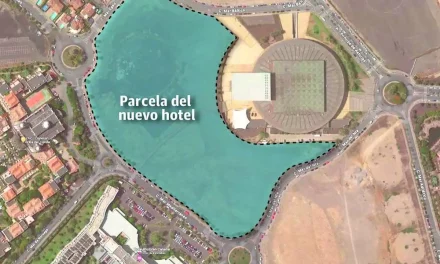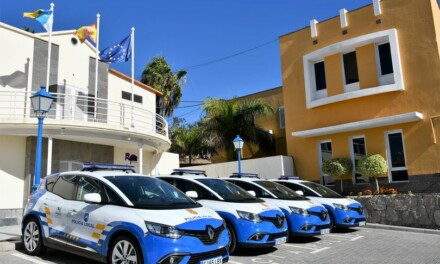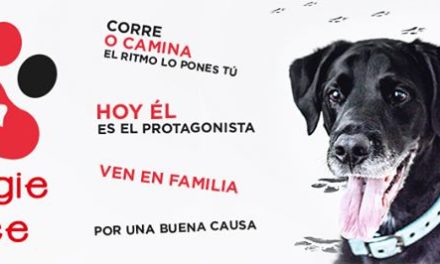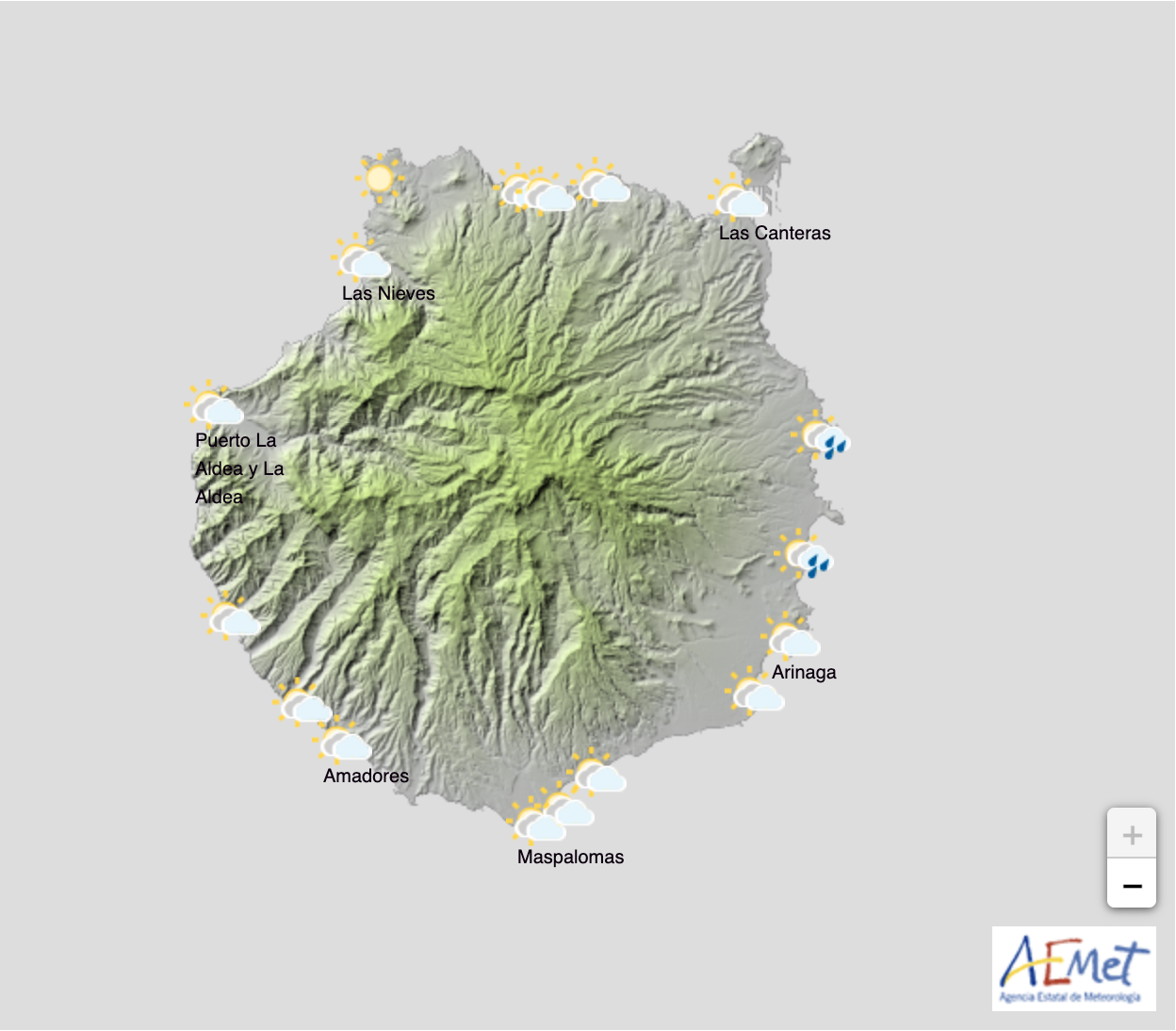This week, municipalities whose beaches and ports have met the Blue Flags 2023 standards have been receiving their Blue Flags. The Association for Environmental Education and Consumer Affairs (ADEAC – ASOCIACIÓN DE EDUCACIÓN AMBIENTAL Y DEL CONSUMIDOR) presented Blue Flags for beaches and marinas in the Canary Islands having, last month, announced the list for this summer, in recognition of their quality standards.
The Canary Islands secured a total of 60 Blue Flags, 56 awarded for beaches and 4 to marinas, surpassing last year’s count by two.
However, perhaps the most iconic urban beach on the islands, Las Canteras in Las Palmas de Gran Canaria, has this year lost the distinction. Virginia Yuste, the vice president of ADEAC, pointed out that to maintain the award, “the bathing water quality must meet the required standards at all sampling points.” It is known that water quality assessments have been returned negative from nearby El Confital, so this may explain the failure in the Gran Canaria capital this year. The newly appointed city council will be working hard to ensure that future discharges do not adversely affect future test results, in a bid to be returned as one of the only provincial capitals in Europe to boast a blue flag beach.
Telde’s La Garita beach has also lost its flag, though the north east municipality retains its other three.
Still no Flags for Mogán
Furthermore, for the fifth year running, not one of the five tourist beaches in Mogán, nor any others, on the popular south-west of Gran Canaria, have been judged worthy of this international award for water quality, environmental care, cleanliness and safety. This is of particular concern when taking into account the high numbers of visitors who use the beaches in Puerto Rico, Amadores, Playa de Mogán, and not to mention Anfi-Patalavaca, Taurito, Tauro,
Campaigners have complained for many years about a lack of attention to water quality in the area, illegal discharges into the sea and alleged corruption in the area of water treatment and provision, and though the local town hall has appeared uninterested for several years, in relation to such issues, they do also have ultimate responsibility for the health and hygine on all of these beaches, as well as the safety of our visitors, having removed the concessions from private entities in a bid to shore up the municipal coffers with the lucrative revenues generated along this sunny coastline.
Nevertheless, four renowned tourist beaches on the islands have regained their flags, three of them on the south of Gran Canaria, namely Maspalomas, Meloneras, and San Agustín, as well as Los Cristianos on Tenerife.
The award distinguishes those beaches and marinas that meet the criteria of excellence in bathing water quality, comply with environmental regulations, and have adequate health and safety infrastructure to guarantee the health and safety of their users. Beaches and ports that meet these standards are viewed as some of the very best in the world.
 All in all the progression for Gran Canaria has been positive over the last few years, with the island having achieved, for the 2023-24 season, 1 more blue flag beach than last year.
All in all the progression for Gran Canaria has been positive over the last few years, with the island having achieved, for the 2023-24 season, 1 more blue flag beach than last year.
On Monday, those municipalities whose beaches have met the requisite high quality standards over this last year received their corresponding Blue Flags for 2023:
Canary Islands Beaches with Blue Flags: 56
Agaete: Las Nieves.
Agüimes: Arinaga.
Arucas: El Puertillo, Los Charcones.
Gáldar: Sardina.
Ingenio: El Burrero.
San Bartolomé de Tirajana: El Inglés, Maspalomas, Meloneras, San Agustín.
Telde: Hoya del Pozo, Melenara, Salinetas.
FUERTEVENTURA: 11
La Oliva: Corralejo Viejo, Grandes Playas, La Concha.
Pájara: Butihondo, Costa Calma, El Matorral, Morro Jable.
Puerto del Rosario; Blanca, Los Pozos, Puerto Lajas.
Tuineje: Gran Tarajal
LANZAROTE: 7
Arrecife: El Reducto.
Teguise: Las Cucharas.
Tías: Grande (Blanca), Matagorda, Pila de la Barrilla, Pocillos.
Yaiza: Blanca.
LA GOMERA: 3
Alajeró: Santiago.
San Sebastián de la Gomera: La Cueva, San Sebastián de la Gomera.
EL HIERRO: 2
Pinar del Hierro: La Restinga.
Valverde: Timijaraque.
LA PALMA: 6
Breña Alta: Bajamar.
Breña Baja: Los Cancajos.
Los Llanos de Aridane: Charco Verde, Puerto Naos.
Santa Cruz de la Palma: Santa Cruz de la Palma
Tazacorte: El Puerto de Tazacorte.
TENERIFE: 14
Adeje: El Duque, Torviscas.
Arona: El Camisón, Las Vistas, Los Cristianos.
Garachico: El Muelle, Piscinas Naturales de El Caletón.
Guía de Isora: Playa de la Jaquita.
Icod de los Vinos: San Marcos.
Los Realejos: Socorro.
San Cristóbal de La Laguna: Piscinas Naturales de Bajamar, Piscina Natural del Arenisco, Piscina Natural de Jóver.
Tacoronte: La Arena (Mesa del Mar).
The Blue Flag Program strives to promote the sustainable development of coastal areas through the requirement of high standards in the quality of bathing water, safety, environmental management, and information and education for sustainability, criteria all of them that have been taken into account when awarding the Blue Flag to the award-winning beaches of the Canary Islands.
Canary Islands Ports Awards Blue Flags: 4
P. D. de Mogán.
P.D. Pasito Blanco (San Bartolomé de Tirajana).
LANZAROTE:
Marina Puerto Calero (Yaiza).
TENERIFE:
R.C.N. de Tenerife (Santa Cruz de Tenerife).
The criteria that a Blue Flag marina must meet are divided into three large blocks: Information and Environmental Education, environmental management, and Safety and services.
More information on this website

